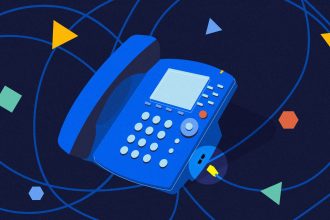Accessibility is without a doubt critical part of web and software development in our rapidly evolving digital environment. Individuals with disabilities, such as those with visual, hearing, motor, or cognitive limitations, may significantly utilize digital information and apps if they are easily accessible. Accessibility testing is thus a vital component in the development process since it ensures that digital goods are inclusive and accessible to all users. This article looks into accessibility testing methodologies in greater detail, emphasizing the necessity of inclusive design and test automation tools.
An Overview of Accessibility Testing
Typically, accessibility testing is nothing but a subset of software testing, which primarily focuses on evaluating a digital product’s usability for people with impairments. The purpose is to detect and remove any hurdles or difficulties that may hinder these people from utilizing the program or accessing material correctly. Furthermore, accessibility testing strives to assure compliance with accessibility standards and rules such as the Web Content Accessibility Rules (WCAG) and the Americans with Disabilities Act (ADA).
Manual Testing for Accessibility
- Keyboard Navigation Testing: One of the most essential parts of online accessibility is keyboard navigation. Testers substantially travel through a website or program using keyboard inputs, confirming that all interactive features, including links and forms, are readily available and operable without using a mouse.
- Screen Reader Testing: Additionally, screen readers are assistive technology used by people who are blind or visually impaired. Screen readers such as JAWS (Job Access With Speech) or NVDA (NonVisual Desktop Access) are used by testers to determine whether the text is appropriately read aloud and whether the necessary information is given.
- Color Contrast Testing: Color contrast is essential for people who have limited eyesight or are colorblind. Moreover, text and backdrop color combinations are evaluated by testers to guarantee readability and compliance with accessibility requirements.
- Form and Input Testing: Forms are an important component of online applications. Forms are tested to verify that they are labeled correctly, include accessible error messages, and can be browsed and submitted using keyboard inputs.
- Zoom Testing: Some users rely on zooming in to make material larger. Testers ensure that the material stays usable and does not break when zoomed in.
Accessibility Testing Automation
While manual testing is necessary for a thorough accessibility assessment, automated testing methods may considerably speed up the process. These tools are intended to identify typical accessibility concerns rapidly. Among the most prominent automated accessibility testing tools are:
- axe: axe is a freely available open-source accessibility testing tool that may be used in a variety of testing and development settings. Further, it analyzes web pages for accessibility issues and generates extensive reports with recommendations on resolving them.
- WAVE: The Web Accessibility Evaluation Tool (WAVE) is another web browser plugin that does accessibility testing within the browser itself. It detects and indicates accessibility flaws on websites in real time, thus making it a valuable tool for developers and testers.
- Pa11y: Pa11y is an excellent open-source accessibility testing tool for automated web page testing as it has a command-line interface and is compatible with continuous integration (CI) pipelines.
- Axe-core: The axe accessibility testing toolkit is powered by the JavaScript package axe-core. It may be immediately connected to online applications, allowing developers to do automatic accessibility testing while developing.
Test Automation Tools for Accessibility Testing
- Selenium: Selenium is a popular test automation tool with various computer languages. You may enhance Selenium’s capabilities to incorporate accessibility testing by integrating with accessibility-focused plugins or utilizing accessibility testing libraries like axe-core.
- Cypress: It is another prominent test automation tool enabling end-to-end testing of online applications. To do automatic accessibility testing, plugins such as “cypress-axe” can be included.
- TestCafe: TestCafe is an end-to-end cross-browser testing framework that enables accessibility testing. It makes it simple to perform accessibility tests across many browsers and environments.
Summing Up
Accessibility testing ensures that digital products are accessible and can be utilized by all users, not just those who meet legal requirements. Manual testing methods, such as keyboard navigation and screen reader testing, are still required for a thorough assessment of accessibility. On the other hand, automated testing tools and test automation frameworks may considerably speed up the process and help detect typical accessibility concerns early in the development cycle.














